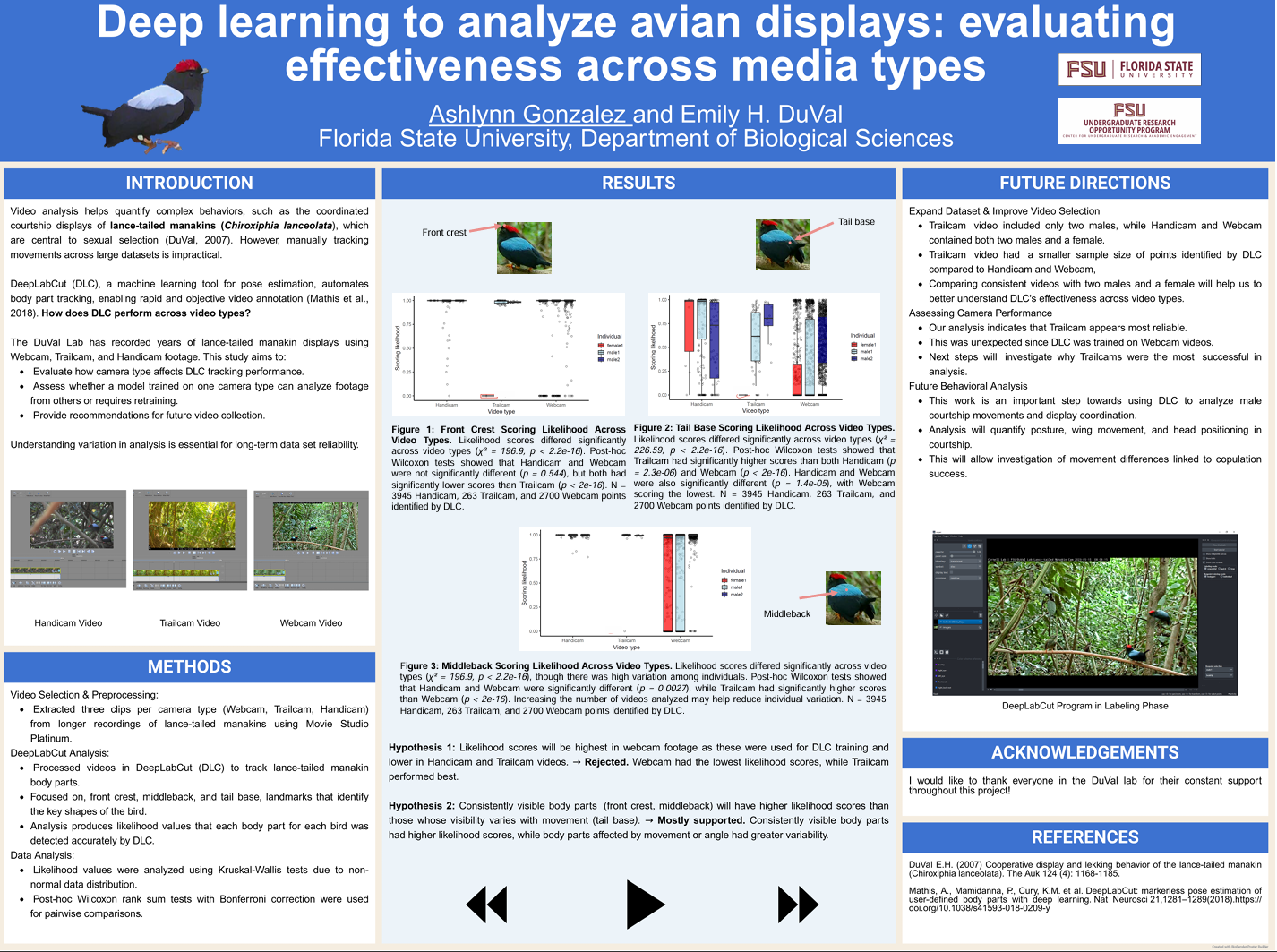Research Symposium
25th annual Undergraduate Research Symposium, April 1, 2025
Ashlynn Gonzalez Poster Session 2: 10:45 am - 11:45 am/ Poster #10

BIO
Ashlynn is a second-year student double majoring in Biology and FSU Teach at Florida State University. Her upbringing in Lutz, Florida, showing livestock and mentoring younger students through FFA sparked her passion for both agriculture and education. She is pursuing a career in either large animal veterinary medicine or agricultural education. Her broader research interests include animal behavior, plant science, and agricultural systems. She is particularly interested in how scientific research can support sustainable farming and animal welfare, as well as help people better understand where their food comes from.
Deep learning to analyze avian displays: evaluating effectiveness across media types
Authors: Ashlynn Gonzalez, Dr. Emily H. DuValStudent Major: Biology/FSU-Teach
Mentor: Dr. Emily H. DuVal
Mentor's Department: Biological Science Mentor's College: College of Arts and Sciences Co-Presenters:
Abstract
The multifaceted nature of courtship displays makes it difficult to identify components most relevant to the animals involved. Video analysis provides new opportunities to understand male lance-tailed manakin (Chiroxiphia lanceolata) displays. DeepLabCut (DLC), a machine learning tool for pose estimation, automates body part tracking, enabling rapid and objective video annotation. Long-term study of this species in the DuVal Lab has generated years of footage, but recording media has changed over time. This study evaluates DLC’s confidence in detecting body parts across three video types—Handicam, Trailcam, and Webcam—to assess how camera quality affects tracking performance. We manually labeled body parts to train the model and analyzed likelihood scores for the frontcrest, middleback, and tail base. Kruskal-Wallis tests revealed that Trailcam footage produced the highest likelihood scores overall, despite not being used in model training. Webcam and Handicam footage had lower scores, with the tail base scoring lowest across all types. These results suggest that video quality and body part visibility significantly influence DLC performance. By refining methods for studying dynamic behaviors, this research enhances our understanding of how sexual selection shapes social interactions and informs future data collection strategies in behavioral ecology.
Keywords: Animal Behavior, Avian, Ecology, Deep Learning


